Abstract
The agent in wastewater sludge previously shown to reduce the heat required to inactivate reovirus (R. L. Ward and C. S. Ashley, Appl. Environ. Microbiol. 34:681--688, 1977) was "separated" from other sludge components and analyzed by infrared spectroscopy. The infrared spectrum of this material was quite similar to the spectra of commercial anionic detergents, and subsequent analyses of the fractionated sludge samples revealed that anionic detergents in sludge were copurified with the virucidal activity. Further measurements on the virucidal activities of specific detergents revealed that ionic detergents reduce the heat required to inactivate reovirus, that cationic detergents are more active than anionic, and that nonionic detergents are inactive. Several detergents were also shown to protect poliovirus and other enteroviruses against inactivation by heat. These results indicate that ionic detergents are the major component in wastewater sludge that reduce the thermal stability of reovirus and, in addition, that detergents are able to protect enteroviruses against heat.
Full text
PDF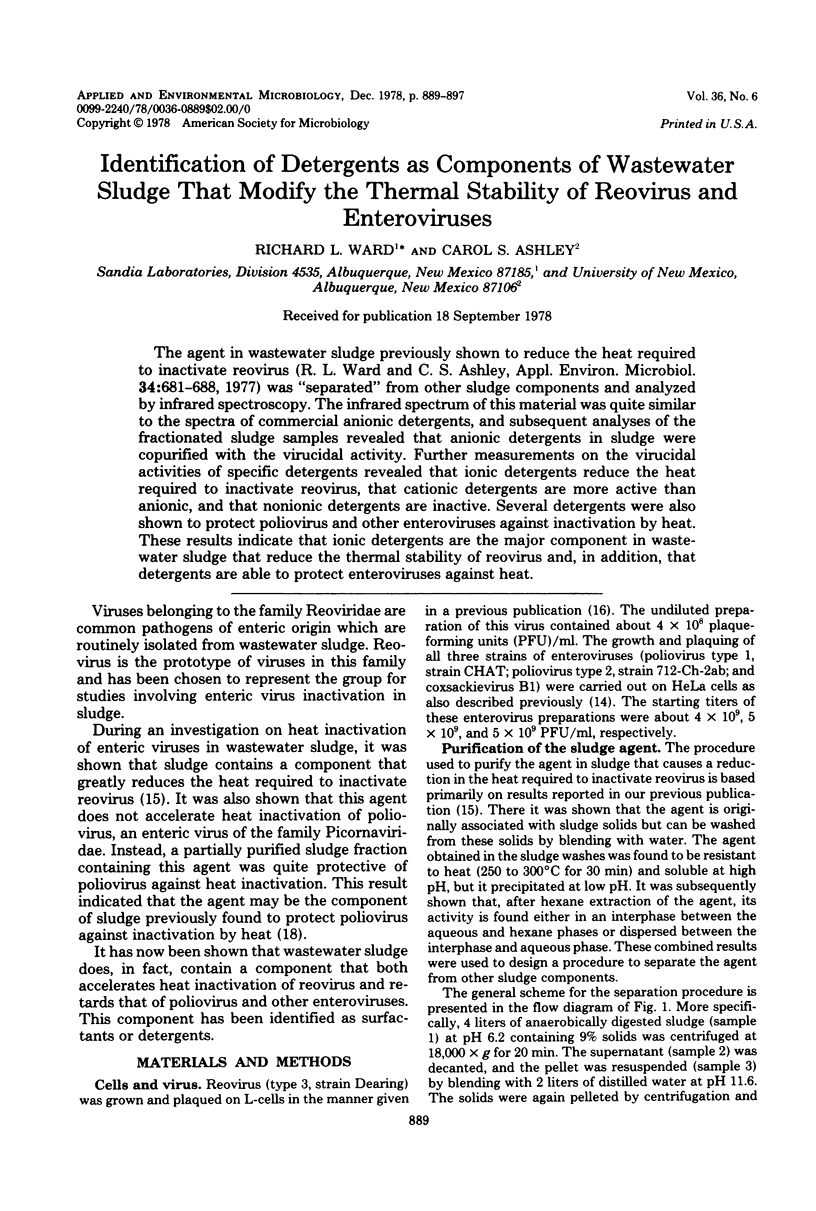
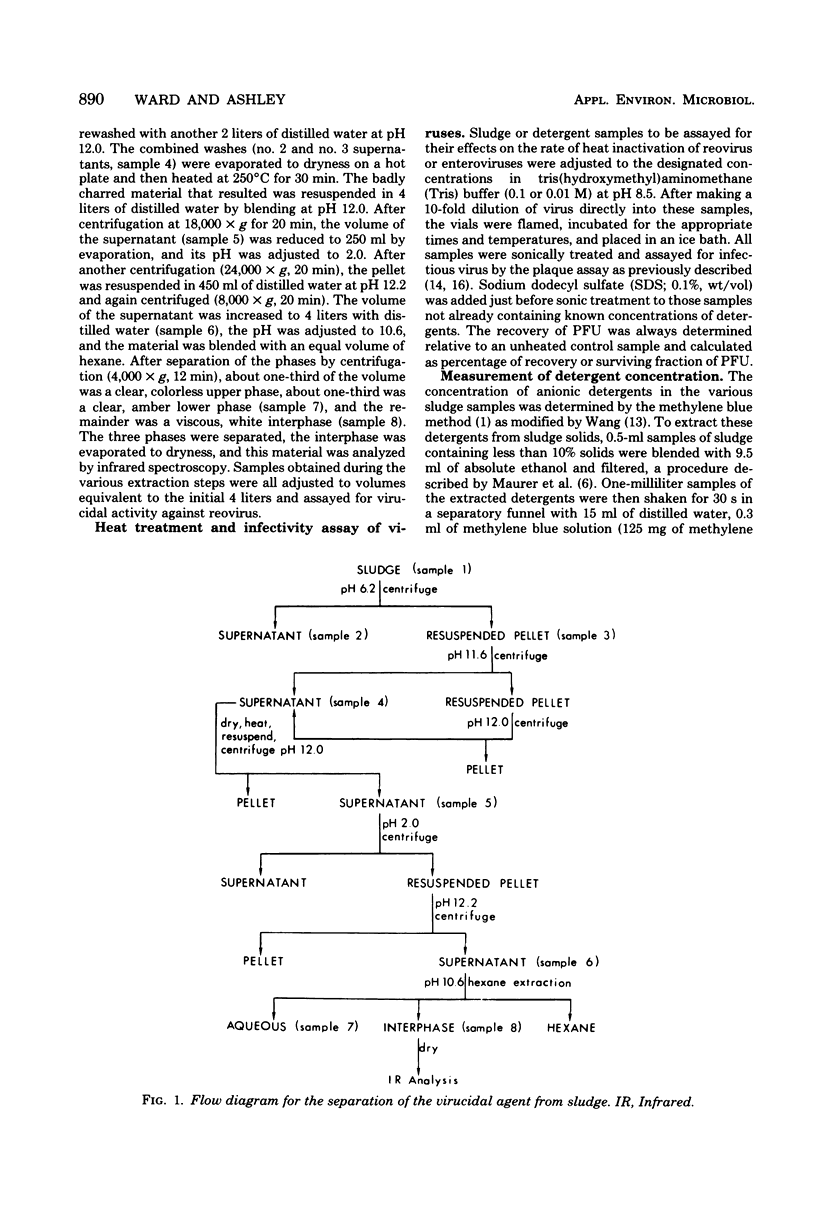
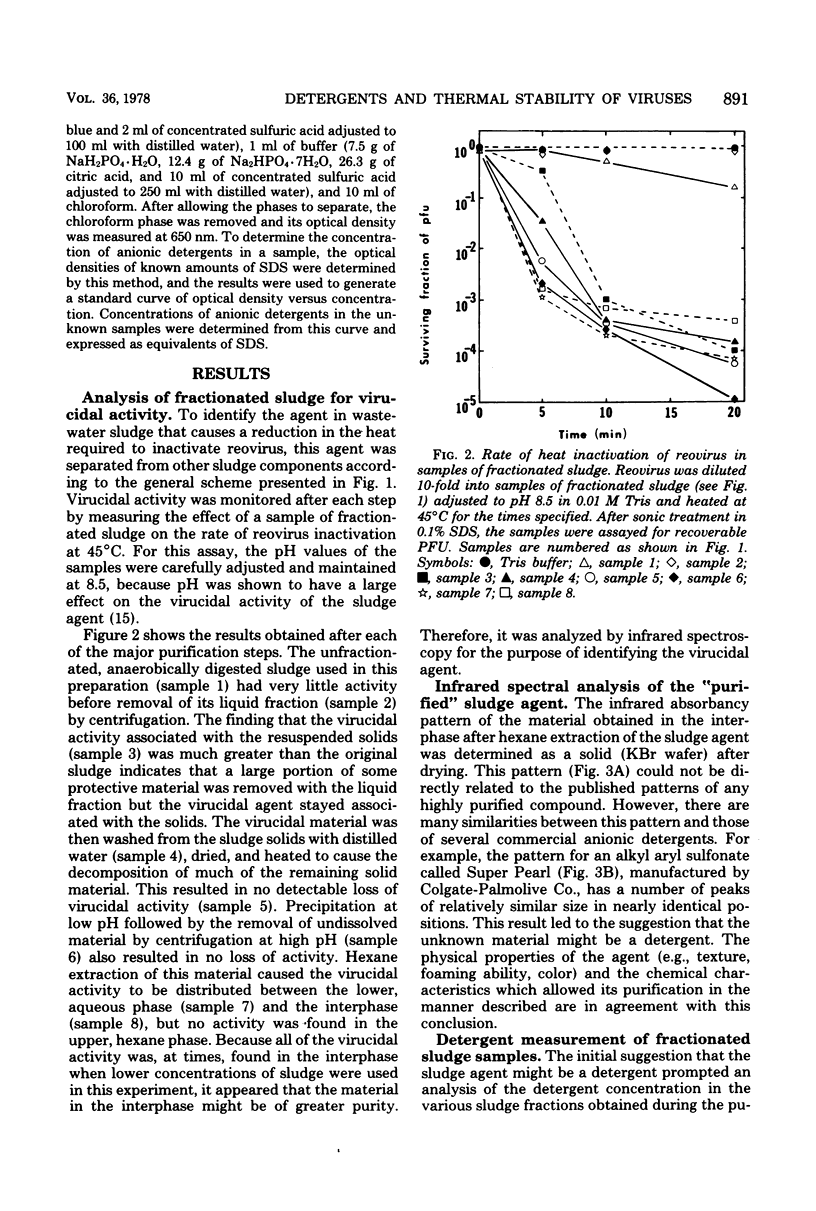
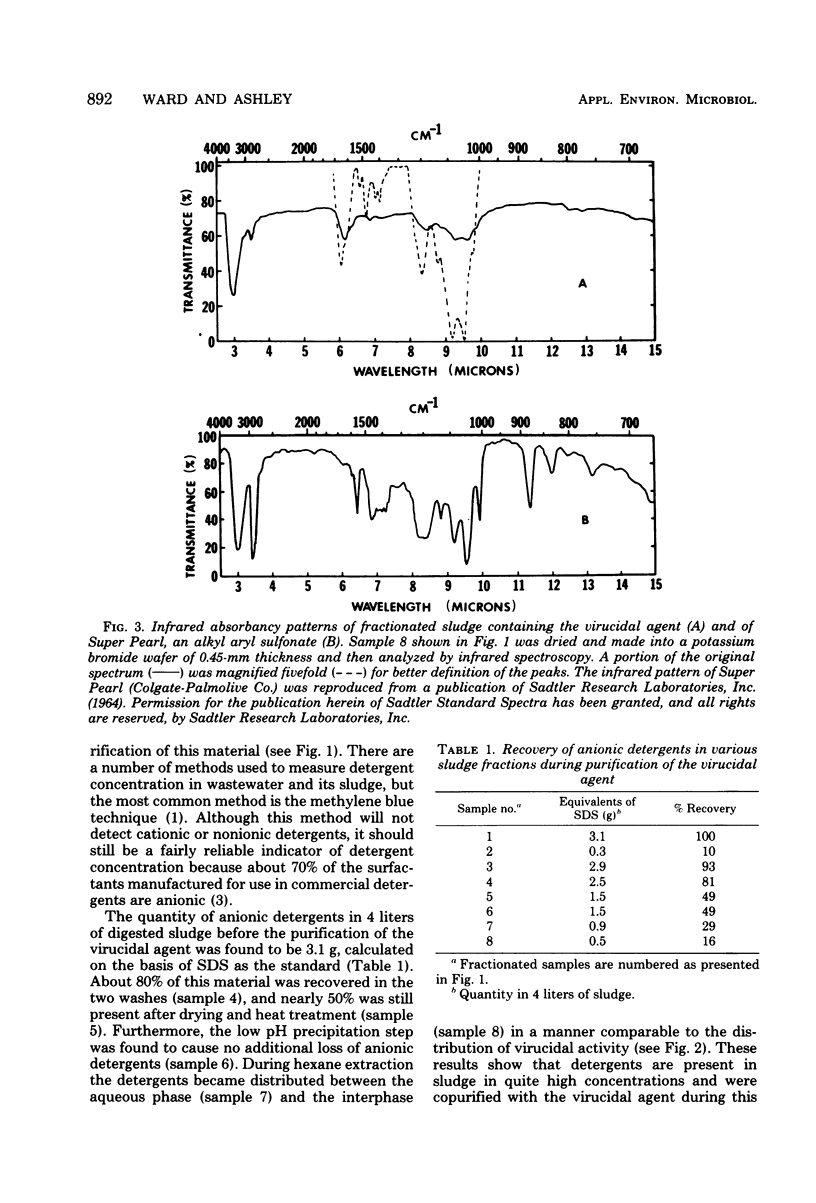
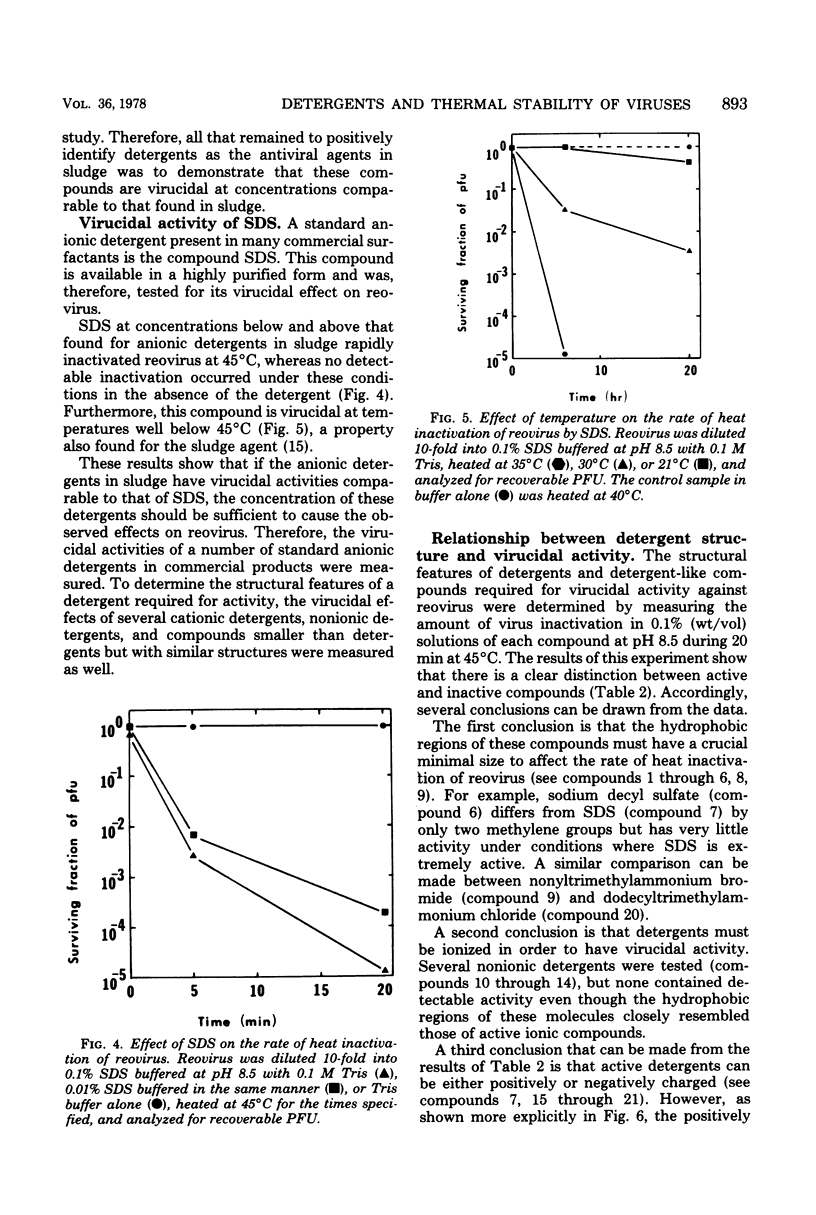
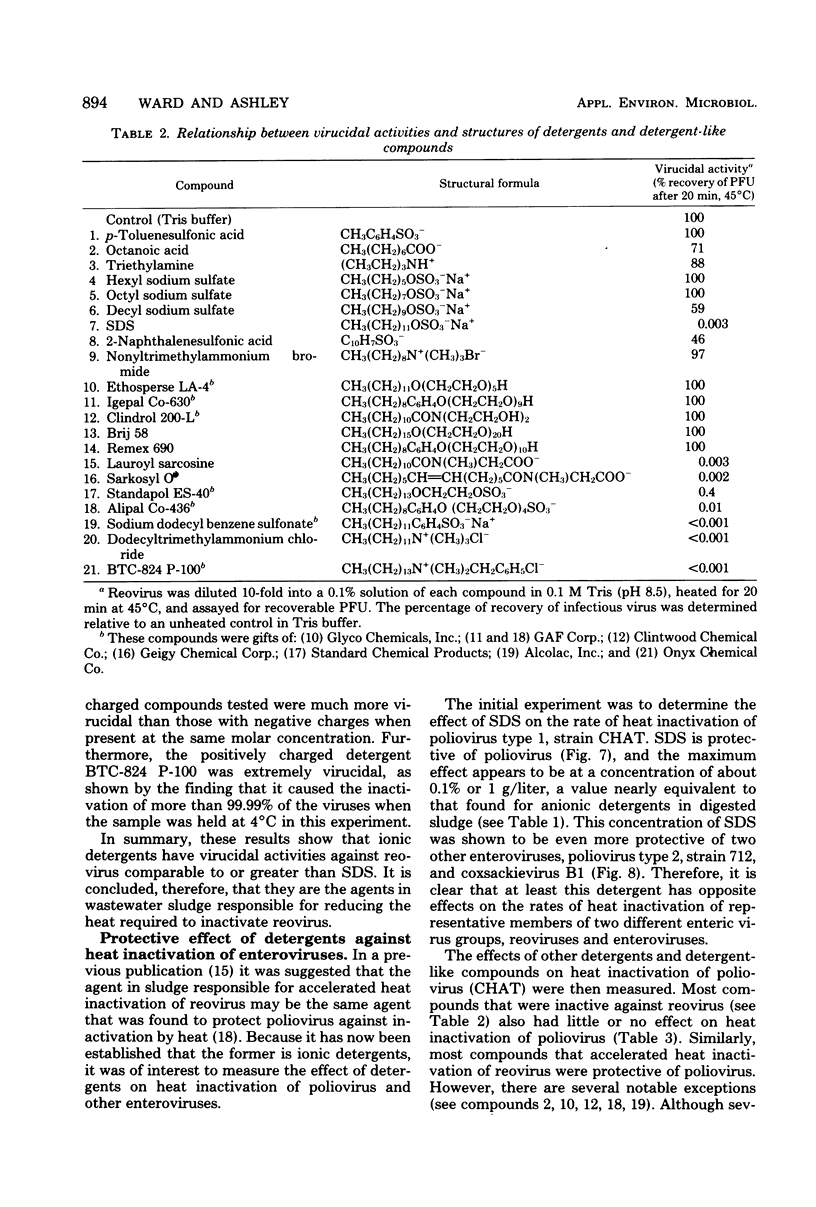
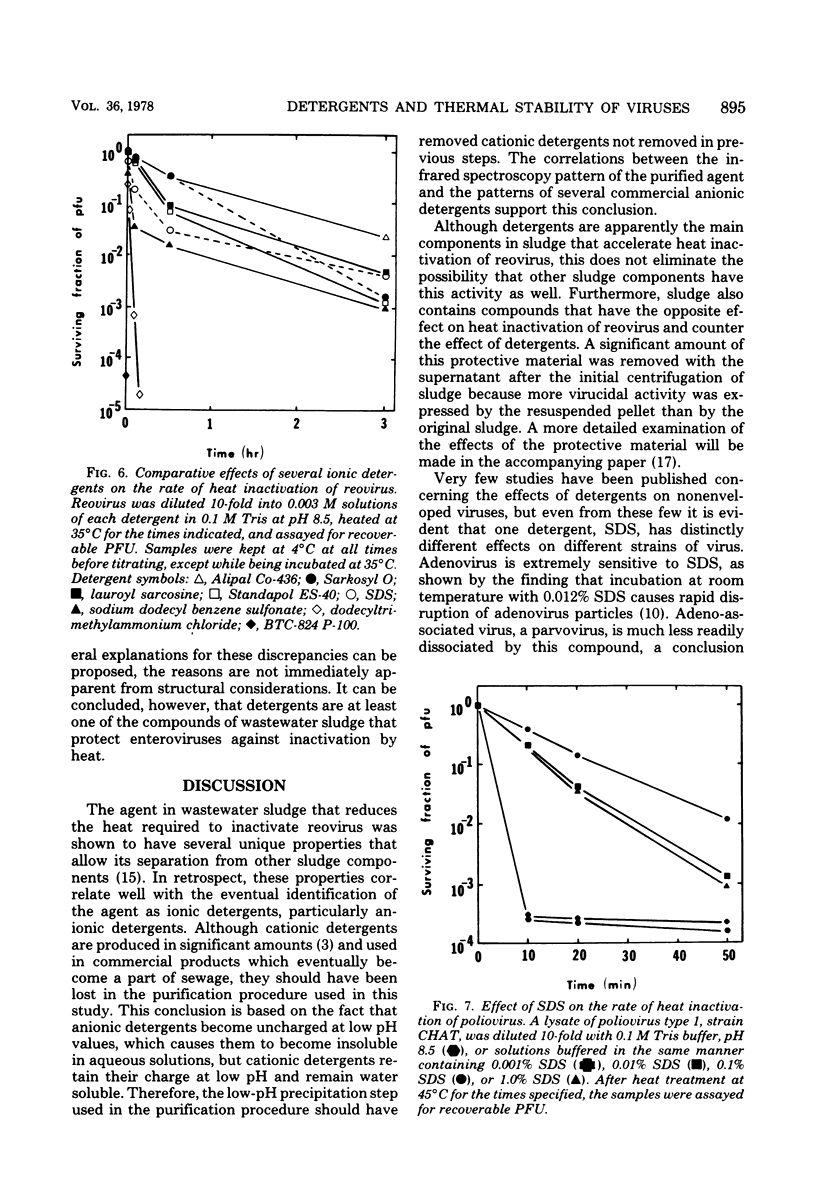
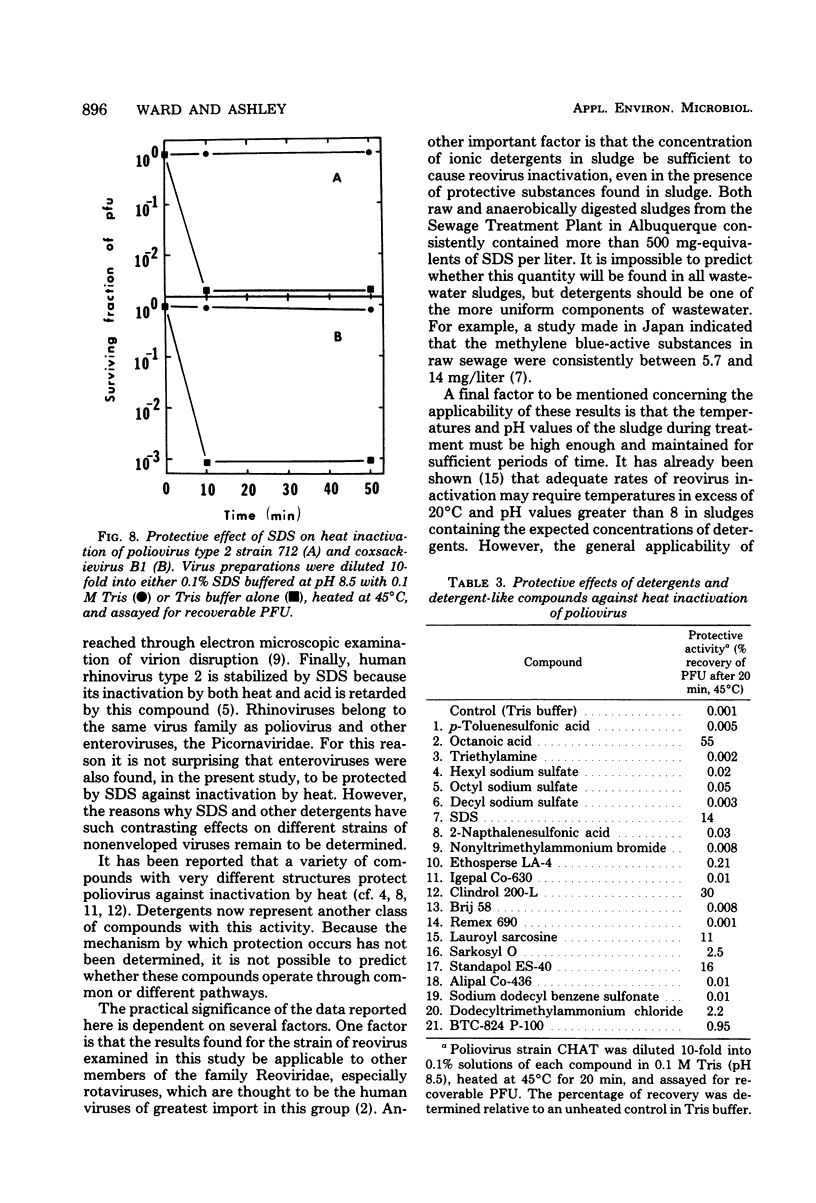
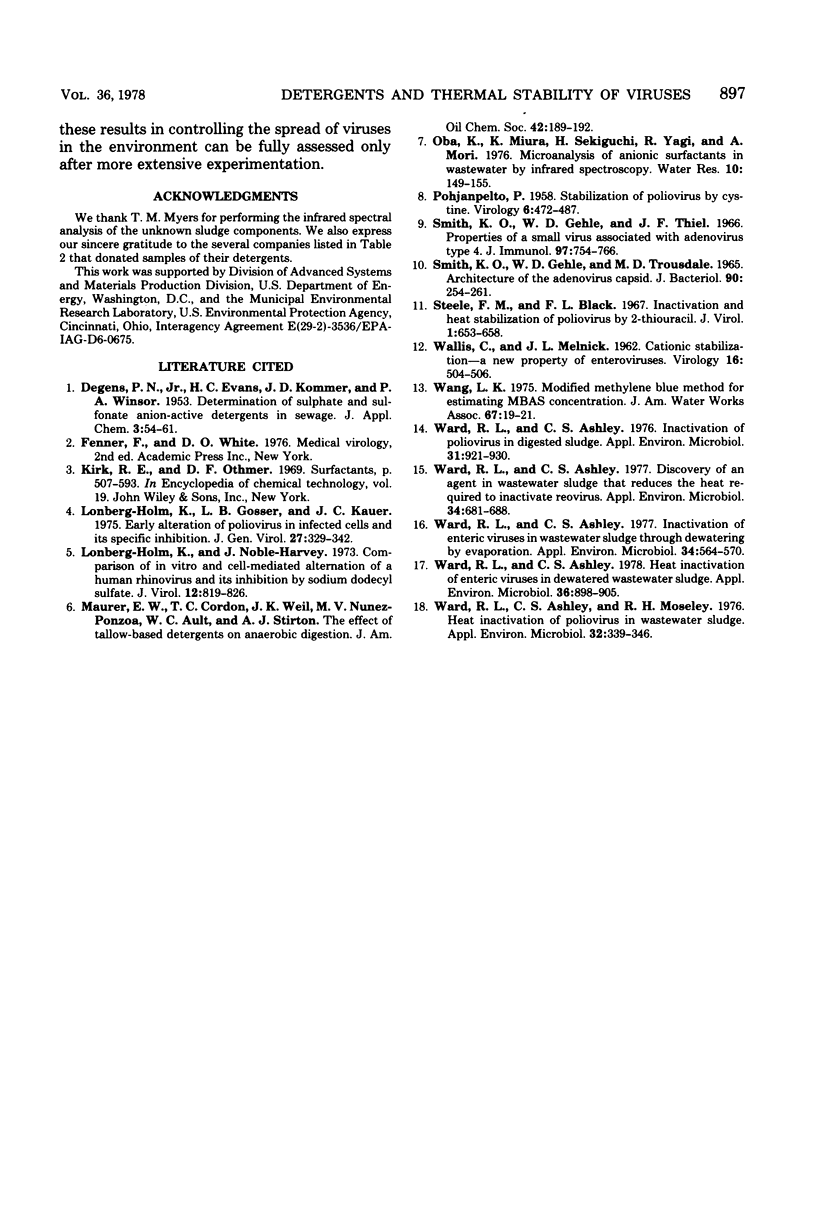
Selected References
These references are in PubMed. This may not be the complete list of references from this article.
- Lonberg-Holm K., Gosser L. B., Kauer J. C. Early alteration of poliovirus in infected cells and its specific inhibition. J Gen Virol. 1975 Jun;27(3):329–342. doi: 10.1099/0022-1317-27-3-329. [DOI] [PubMed] [Google Scholar]
- Lonberg-Holm K., Noble-Harvey J. Comparison of in vitro and cell-mediated alteration of a human Rhinovirus and its inhibition by sodium dodecyl sulfate. J Virol. 1973 Oct;12(4):819–826. doi: 10.1128/jvi.12.4.819-826.1973. [DOI] [PMC free article] [PubMed] [Google Scholar]
- POHJANPELTO P. Stabilization of poliovirus by cystine. Virology. 1958 Oct;6(2):472–487. doi: 10.1016/0042-6822(58)90095-3. [DOI] [PubMed] [Google Scholar]
- Smith K. O., Gehle W. D., Thiel J. F. Properties of a small virus associated with adenovirus type 4. J Immunol. 1966 Dec;97(6):754–766. [PubMed] [Google Scholar]
- Smith K. O., Gehle W. D., Trousdale M. D. Architecture of the Adenovirus Capsid. J Bacteriol. 1965 Jul;90(1):254–261. doi: 10.1128/jb.90.1.254-261.1965. [DOI] [PMC free article] [PubMed] [Google Scholar]
- Steele F. M., Black F. L. Inactivation and heat stabilization of poliovirus by 2-thiouracil. J Virol. 1967 Aug;1(4):653–658. doi: 10.1128/jvi.1.4.653-658.1967. [DOI] [PMC free article] [PubMed] [Google Scholar]
- WALLIS C., MENICK J. L. Cationic stabilization--a new property of enteroviruses. Virology. 1962 Apr;16:504–506. doi: 10.1016/0042-6822(62)90234-9. [DOI] [PubMed] [Google Scholar]
- Ward R. L., Ashley C. S. Discovery of an agent in wastewater sludge that reduces the heat required to inactivate reovirus. Appl Environ Microbiol. 1977 Dec;34(6):681–688. doi: 10.1128/aem.34.6.681-688.1977. [DOI] [PMC free article] [PubMed] [Google Scholar]
- Ward R. L., Ashley C. S. Heat inactivation of enteric viruses in dewatered wastewater sludge. Appl Environ Microbiol. 1978 Dec;36(6):898–905. doi: 10.1128/aem.36.6.898-905.1978. [DOI] [PMC free article] [PubMed] [Google Scholar]
- Ward R. L., Ashley C. S. Inactivation of enteric viruses in wastewater sludge through dewatering by evaporation. Appl Environ Microbiol. 1977 Nov;34(5):564–570. doi: 10.1128/aem.34.5.564-570.1977. [DOI] [PMC free article] [PubMed] [Google Scholar]
- Ward R. L., Ashley C. S. Inactivation of poliovirus in digested sludge. Appl Environ Microbiol. 1976 Jun;31(6):921–930. doi: 10.1128/aem.31.6.921-930.1976. [DOI] [PMC free article] [PubMed] [Google Scholar]
- Ward R. L., Ashley C. S., Moseley R. H. Heat inactivation of poliovirus in wastewater sludge. Appl Environ Microbiol. 1976 Sep;32(3):339–346. doi: 10.1128/aem.32.3.339-346.1976. [DOI] [PMC free article] [PubMed] [Google Scholar]


